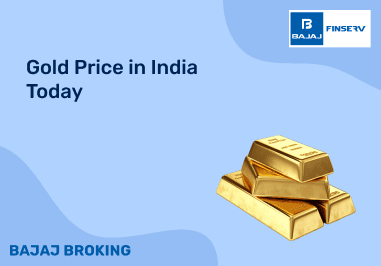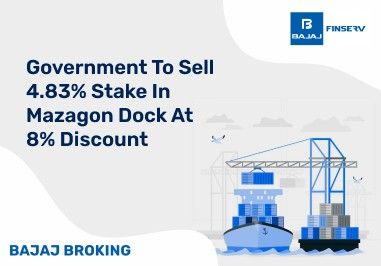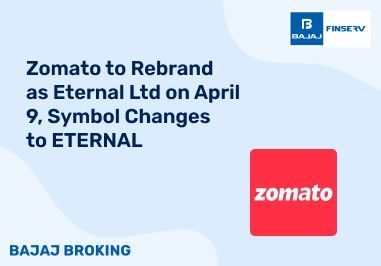IPOs or Initial Public Offerings are generally quite a popular investment option. In fact, in 2024 alone, around 300 IPOs were launched, helping SMEs and the mainboards raise around 8,753 crores and 1.6 lakh crores, respectively. The reason behind the popularity of IPOs is simple: it allows investors to earn via the advantage of first mover. This means investors can buy shares and become shareholders in companies when they go public. What's amazing is you secure the shares at attractive prices. With IPOs, you gain access to companies with potential and can bag returns from their growth and capital appreciation over time.
IPOs aren't just significant for investors but companies as well. IPOs allow companies to raise funds, which helps them grow, expand, carry day-to-day business, and enhance their development opportunities. This is also one of the reasons why there has been a significant increase in the number of launched IPOs.
Now, it is also important to understand that different types of IPO investors are eligible to apply for these IPOs. These different types of IPO investors have different goals, risk tolerance, and capital, with a special percentage of shares or allocation in the IPO application. So, before you move ahead with your IPO application, consider understanding these investor types in IPO to understand their influence and much more. Stay tuned as we explore these investors, their characteristics, their quotas, and much more.
Types of IPO Investors
Now that you have a basic understanding of IPOs let's move forward. Here are some common types of IPO investors with different investment goals and reserved quotas.
Retail Individual Investors (RIIs)
RIIs or Retail Individual Investors are quite common types of investors in IPO applications. Generally, these are individual IPO investors with an investment that is comparatively smaller than the other institutional or big investors. Individuals subscribing to shares worth ₹2 lakhs or less than the same fall in this category.
In addition to resident individuals, this category also includes Non-Resident Indians (NRIs) and Hindu Undivided Families (HUFs). Further, RIIs may bid at the cut-off price, and the minimum allocation quota for them is reserved at 35%. However, it is also important to understand that only the companies that have been able to register profits over the last three years are eligible to allow 35% to retail investors. For the others who aren't able to adhere to these criteria, the companies can just offer 10% to RIIs.
Benefits of RIIs
The smaller investment amount allows even investors with low-risk tolerance and limited access to capital to be a part of the IPO application.
Helps you be shareholders of companies with potential growth and future prospects.
Allows you to build a good investment amount generally.
Non-Institutional Investors (NIIs) / High Net Worth Individuals (HNIs)
Other common categories of investors in IPOs are non-institutional buyers or high net-worth individuals. Any individual who is willing to invest or subscribe to shares worth more than ₹2 lakhs can be seen as high net-worth individuals or HNIs. Similarly, institutions or big companies capable and willing to subscribe shares worth more than ₹2 lakhs are termed as non-institutional buyers or NIIs. What makes NIIs different from qualified institutional buyers or QIBs is that the NIIs need to be registered with the Securities and Exchange Board of India (SEBI).
The share allocation to these types of IPO investors is done on a proportional basis, meaning they are generally awarded shares irrespective of their oversubscription or not. Typically, 15% of the IPO offer is reserved for NIIs or HNIs.
Benefits of NIIs/HNIs
Qualified Institutional Buyers (QIBs)
Qualified Institutional Buyers or QIBs include commercial banks, foreign portfolio investors, mutual funds houses, and public financial institutions. Each of these is registered under the SEBI. Underwriters aim and try to sell more and more shares to these QIBs as they help them raise the targeted funds.
However, if more and more shares are simply sold to QIBs, it will reduce the general shares available to the public. In fact, it may also lead to an increase in share prices. For this purpose, SEBI restricts companies not to allocate more than 50% of the offer to qualified institutional buyers.
Benefits of Qualified Institutional Buyers
The processing time for QII application is generally lesser than that of share issuance to the general public
Qualified Institutional Buyers can buy and invest in bigger stakes in the company. Further, they can also sell their shares anytime they feel once the lock-in period of 90 days is completed.
IPO application for QIBs is also cost-effective. Why, you ask? Well, there is no need for bankers, auditors, and other entities for approvals, which reduces the extra costs here and there.
Anchor Investors
Anchor investors are a new type of IPO investors introduced by the SEBI in 2009. These can be simply understood as investors who have the opportunity and commit to buying a specific IPO portion before it is available to the general public. This also helps companies earn the trust and confidence of the customer before going public. The involvement of anchor investors makes the IPO offering look more stable and encourages the participation of other investors in the IPO application.
Generally, anchor investors are offered a fixed share allotment at a pre-set price. Anchor investors are nothing but a category of qualified institutional buyers willing to make investments worth more than ₹10 crores in an IPO application. 60% of the shares reserved for QIBs can be offered to anchor investors.
Benefits of Anchor Investors
Anchor investors get the opportunity to bid before the IPO application is opened for the general audience.
Helps attract customers' trust and attention and other investors to the IPO.
Have a quota reserved from the allocation quota of qualified institutional buyers.
Anchor investors can apply for large stakes of more than ₹2 crores.
The lock-in period is comparatively shorter than QIBs. Anchor investors have a lock-in period of just 30 days.
Comparison of IPO Investor Categories
Investor types in IPO applications differ based on their capital, allocation, and much more. Here is a table for you to take a quick glance at and understand the different categories of IPO investors.
Investor Types
| Features
| Objectives
| Investment Size
| Reserved Quota
| Risks
|
Retail Individual Investors
| Includes Individual investors, resident individuals, NRIs, and HUFs with generally limited capital access.
| Willing to earn from future prospects and increase returns from the company's potential and growth opportunities.
| The investment size is comparatively smaller than other categories of IPO investors. Retail investors are willing to subscribe for up to ₹2 lakh worth of shares.
| Companies are supposed to reserve 35% of their IPO process for retail individual investors.
| These generally have limited risks because of smaller investments and capped regulations.
|
High Net-Worth Individuals/Non-Institutional Investors
| Includes high-net-worth individuals and other big non-institutional investors with flexibility in the investment limit.
| Willing to enhance returns and earn from strategic gains of potential companies.
| The investment size is comparatively larger and is also flexible. It may vary based on the capacity of the investors. Investors are willing to make investments of more than ₹2 lakhs.
| Typically, 15% of an IPO offer is usually reserved for NIIs/ HNIs.
| They are prone to risks coming from market fluctuations and other regulatory barriers.
|
Qualified Institutional Buyers
| Includes commercial banks, public financial institutions, foreign portfolio investors, and mutual funds houses, that are registered with SEBI.
| It helps companies raise targeted funds and can also increase share prices.
| The investment size is fairly large, helping companies secure adequate funds. And thus, underwriters aim to sell more and more shares to these QIBs.
| Companies cannot reserve and allocate more than 50% of the IPO offer to qualified institutional buyers.
| Have to be considerate of market volatility, future growth, and flexibility.
|
Anchor Investors
| Includes institutional and big investors with enough resources and access to capital.
| Offers stability and helps companies attract other investors and customers with improved trust and confidence.
| The investment size made by anchor investors is comparatively larger and significant. They are qualified Institutional buyers who can invest more than ₹2 crores in an application.
| Typically, 60% of the shares reserved for QIBs can be offered to anchor investors.
| Have a lock-in period, and the flexibility is also limited.
|
Conclusion
All in all, IPOs attract a variety of investors for several reasons. First, they offer investors the opportunity to earn from the future prospects of a company, ultimately enhancing your profits. Second, investing in these IPOs also helps you diversify your portfolio. You get access to different industries and different sectors, allowing you to spread your risks better and reduce them to better cope with market fluctuations and unexpected downturns.
Understanding the significance of IPO and the different types of IPO investors is crucial. Once you are aware of the various categories, you know their eligibility, relevance, and reserved quota in the IPO application process. This helps you better secure your chances in an allotment. Further, it is important to note that before applying for any IPO, you must do thorough research. Consider understanding its growth prospects, opportunities, risks, and more to make an informed decision.













